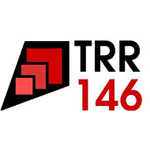
Seminar über Theorie der kondensierten Materie / TRR146 Seminar
Nov. 21, 2019 at
10:30 a.m.
in
Newtonraum, 01-122, Staudingerweg 9
F. Schmid
friederike.schmid@uni-mainz.de
P. Virnau
virnau@uni-mainz.de
L. Stelzl
lstelzl@uni-mainz.de
Friction and Lubrication: Liposome- bearing PEO layers under physiological Conditions
Dr. Anbumozhi Angayarkan Somasundaram (Weizmann Institute, Rehovot, Israel)
Phosphatidylcholine (PC) lipids complexed with hyaluronan (HA) have been proposed to form strongly lubricating boundary layers at biosurfaces such as articular cartilage. Depending on the type of PC used, efficient lubrication with friction coefficients down to 10-4 under physiologically high pressures (~100 atm) have been observed. This was attributed to hydration lubrication, acting at the highly hydrated phosphocholine headgroups of the PC lipids, exposed at the liposome surfaces. Such hydration layers can sustain large compressions without water molecules being squeezed out from the gap between sliding surfaces. At the same time, the hydration shells can relax rapidly, ensuring a fluid like response under applied shear. This combination of low shear stresses while sliding under high normal stresses results in very low friction coefficients, an effect termed hydration lubrication. We use the surface force balance (SFB) to examine interactions between polymer layers, in particular how normal interactions and especially frictional interactions, are modified when PC liposomes are added surface in pure water and in aqueous salt solutions, mimicking the presence of macromolecules on the surface of cartilage.